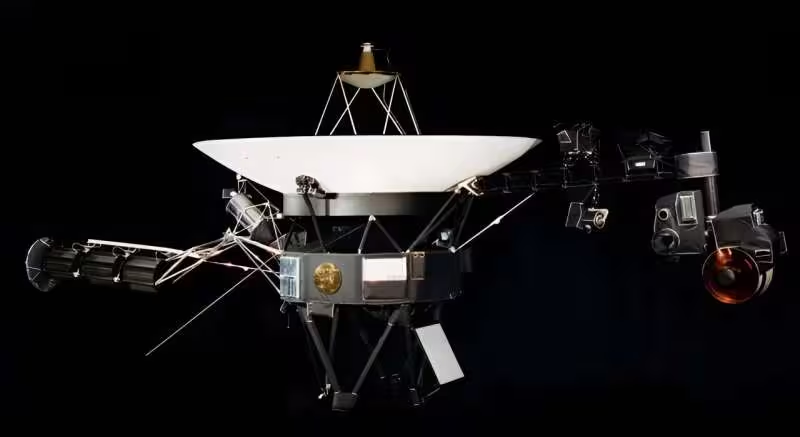NASA reported that they were able to fully re-establish communication with the Voyager-1 (Voyager 1) probe. Full communication was lost at the end of October when the probe’s automation shut down the main transmitter. The auxiliary channel was so weak that it could only send and receive short commands, stopping the transmission of any scientific information. Now that’s behind us and grandpa is at it again.
Voyager 1 and its twin, Voyager 2, have been in space for 47 years. Power on the ship is provided by three radioisotope thermoelectric generators located on each side. Plutonium-238 embedded in the blocks emits heat, which is converted into electricity during the decay process.
The power supplies in the probes lose 4 W of power every year. As interplanetary flights progressed, some of the scientific equipment was shut down due to unnecessary use. Both probes are currently in interstellar space, keeping four of the original eight instruments powered on. Scientific data is actually collected in the field of plasma and magnetic fields outside the solar heliosphere. During the experiments, it turned out that a number of devices were able to operate without forced heating, which also made it possible to save the power of the consumed on-board power supply.
In October, the NASA team sent a command to Voyager-1 to turn on the heating, after which communication with the probe was lost. X was the main communication channel between Earth and the probe. Automation instead. It included the weaker S-band transmitter, included for the first time since 1981. scientific study).
After a series of experiments with manual power distribution between Voyager 1 nodes, the NASA team succeeded in launching the X-band transmitter. This occurred on November 18 and was confirmed the following week. All four of the probe’s scientific instruments began transmitting the collected data to Earth. NASA is confident they have solved the problem. At least for a while. The probes’ hardware is so old that it’s surprising they continue to work. But these are our only scouts in interstellar space. “Voyager-1” collects information from a distance of 24.9 billion km from Earth. Even light takes about two days to fly to it and return.













